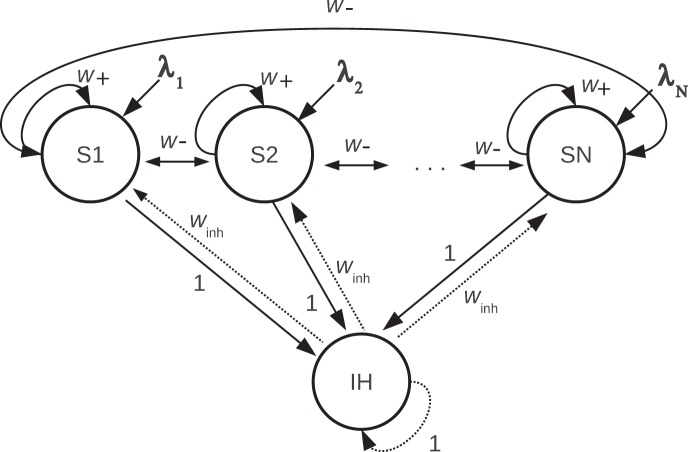Figure 1. The attractor network model.
The single network is fully connected. The excitatory neurons are divided into N selective pools or neuronal populations S1–SN of which three are shown, S1, S2 and SN. There were typically N = 10 short term memory populations of neurons in the integrate-and-fire networks simulated, and analyzed with mean field analyses. Each of these excitatory pools represents one short term memory by maintaining its activity during a delay period after a cue has been applied. We show that if the excitatory connections show synaptic facilitation, then any number in the range 0–9 of the pools will maintain its activity in the delay period depending on which set of pools was activated by a cue λ1, λ2, … λ10. The synaptic connections have strengths that are consistent with associative learning. In particular, there are strong intra-pool connection strengths w +, and weaker between-pool synaptic connection strengths of w −. The excitatory neurons receive inputs from the inhibitory neurons with synaptic connection strength w inh. The other connection strengths are 1. w + was typically 2.3, w − 0.87, and w inh 0.945 as determined using a modified mean field analysis. The integrate-and-fire spiking network typically contained 1000 neurons, with 80 in each of the 10 non-overlapping short term memory (STM) excitatory pools, and 200 in the inhibitory pool. Each neuron in the network also receives external Poisson inputs λext from 800 external neurons at a typical rate of 3.05 Hz/synapse to simulate the effect of inputs coming from other brain areas.

